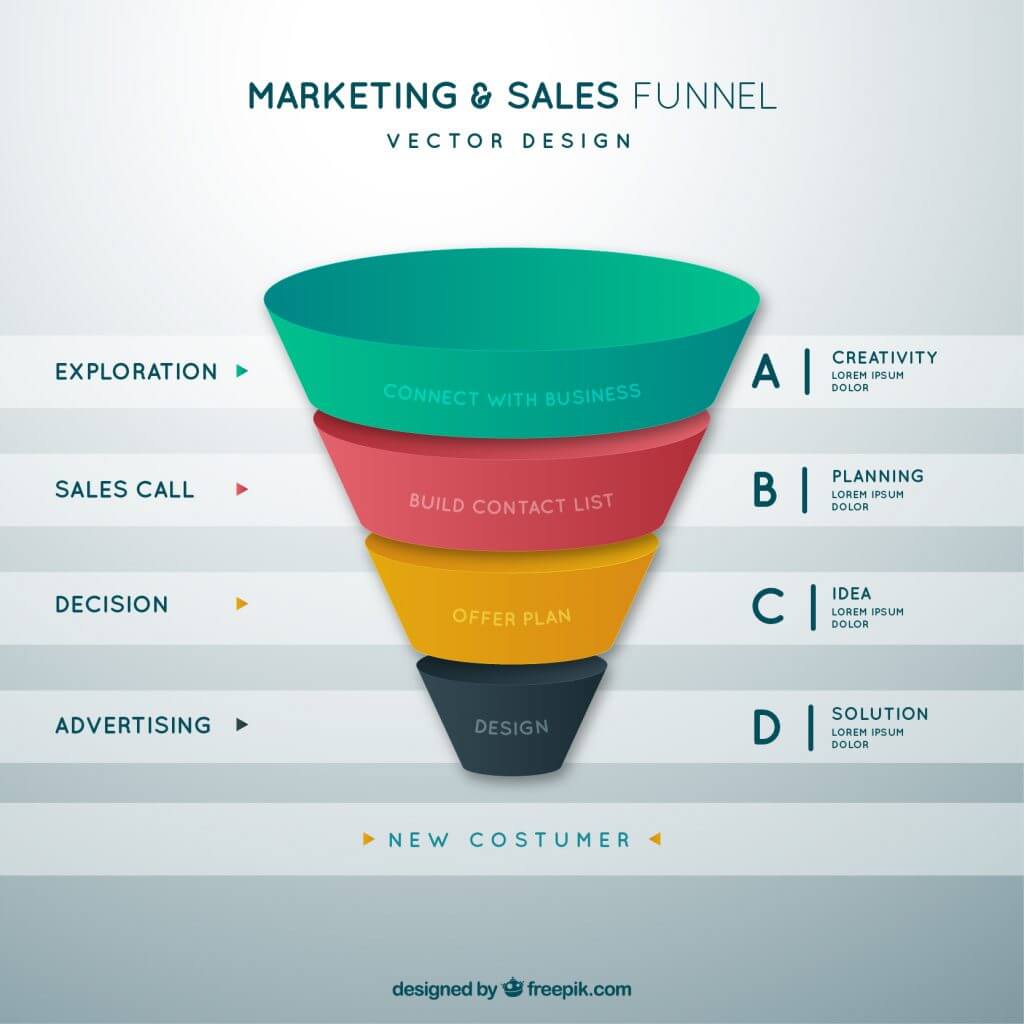Last updated on January 1st, 2022
Does your company want to see similar benefits of sales and marketing working together?
Most companies keep their sales and marketing teams separate. They don’t know what the other is working on, they aren’t updated on the happenings in the other team nor do they have access to each other’s data which leads to a lot of lost opportunities. Marketing team doesn’t get to know what is working in the market or not and the sales do not get to communicate to the marketing team about what marketing material actually works in the market even if those are minute changes that could be made in the structure or the style of content created. A recent survey showed that “51 percent of marketers are not satisfied with the level of communication between the teams and 53 percent of sales professionals are not pleased with marketing’s support.” Therefore, it’s time to restructure the two teams to facilitate better workflow between them and to optimize the resources of the company as a whole.
12 Ways in which content marketing and sales team can work together:
1. Sharing data:
The data collected by one can be and should be shared with the other. A sales team will know the buyer personas and the target audience better than the marketing team with their practical knowledge. The two can work together by sharing the data they have already or have come across recently. Making it easier for the other to strategize. A content marketing team could create content according to the data that a sales team provides to them.
2. Creating a buyer personas:
A unified buyer’s persona goes a long way to help the company grow. To sell anything one must know their target audience. A sales team functions around getting to the target audience while the marketing team works in the backend on creating content for the target audience according to their preferences. The image of the target audience or the buyer must be the same in both teams for the growth which would otherwise lead to a chaos. A sales team would be pitching the product to Young Adults while the marketing team would be making the content for Senior citizens. Therefore both the sales and marketing depts should be and need to be clear on who their buyers are.
3. Making a Customer Journey Process:
The sales and marketing team should sit together in a weekly meeting and form the customer journey cycle. Once the cycle is defined it will make them aware of the phase they are in as a company and what is the next step. The cycle should be understood by both teams about how qualified leads transform into a client with quality content. Over 68% B2B marketers haven’t identified their sales funnel. Both the teams need to define and understand the sales funnel. This will help improve the process as well as keep up with the changes in the process.
4. Identifying leads:
The sales team must help the marketing team understand the various ways in which a lead can be identified or what qualifies someone as a lead. Lead are of two types: a marketing-qualified lead (MQL), and a sales-qualified lead (SQL). Both the teams need to find a common ground to define a lead, if they continue to define the leads differently it will result to a lot of missed opportunities and improper crediting of leads within the company but if worked on it together, there could be content created for the common lead else it was leading to creation of content by the marketing team which didn’t match the sales leads needs.
5. Creating content based on the sales funnel:
The content needs of marketing and sales haven’t been clear which leads to creation of content by the marketing team that isn’t used by the sales team. Upto 70% of the marketing content goes unused. The content needs to get aligned to the interests and needs of the target audience for which sales team should make the marketing aware about the sales funnel and the direct outreach to the marketing as they know their target audience the best. They know the content that is desired by the audience and they should make their content needs clear to the marketing team, who can then create content which will inspire, inform, educate and attract the leads.
Image Source: freepik.com
The sales team will be able to utilize every marketing content created. This will optimize the use of resource and will increase efficiency dramatically to give better results.
6. Using progressive profiling:
Most leads produced by marketing team are rejected by the sales team. They don’t take those leads in the account or don’t use it at all which results in wasted efforts put in by the marketing team. The sales team needs to make the marketing team understand why a particular lead is not a fit. Else they will keep creating content for leads and working on leads which aren’t the right fit. Sales team ignores 80% of the lead created by the marketing team. Sales and marketing can together form a more effective technique to produce more qualified lead which will be the base for effective content marketing.
7. Consulting one another:
Before using, posting or sending off any content to the readers or the customers, sales and marketing teams must consult with each other about the content marketing strategy. Most buyers are looking for content that doesn’t talk much about sales. This is where content marketing comes in and this is where both the teams need to collaborate. A lot of times, the sales team writes emails and start a campaign without consulting the marketing team. Marketers have a better idea and experience in writing and creating content that will attract more visitors.
8. Training Together:
The sales and the marketing should also be trained together in technology. If the system remains the same for both teams, the flow of content creation smoothens too as both the teams know each other and won’t be hesitant to ask each other for help. This minimizes the problems due to the communication gap.
Image Source: freepik.com
9. Defining ‘Bad Leads’:
Marketers must be informed by sales about what bad leads and how do they affect the business rather than simply labeling a bad lead. As for who their content is getting created for. Ideally, their content should be desirable by everyone a lead or not. Sales and content marketing should work on creating content that doesn’t fit every shoe.
10. Recycling the sales leads to marketing:
A lead that might not be converted must be given to the marketing team by sales. This is where content marketing comes in. If a lead who is looking for soaps and doesn’t want to buy our product produced soap, we can forward them to marketing with content related to types of soaps and its uses. Around 95% of buyers choose the product that provides them with knowledge and solution related content, helping the consumer through each stage of the buying process.
11. Brainstorming together:
Ideas about new content or campaigns can come up from both teams but it should match the expectation level of both as well. To avoid further more time dedicated towards changes. Brainstorming between sales and marketing team will help come up with content together. The business has a higher chance of increasing your ROI by focusing on KPIs that are significant to both departments: Lead generation, Email sign-ups, Social media engagement, Cost per lead and Landing page conversion rates.
Image Source: freepik.com
12. Company’s culture:
It’s not just about only two specific teams in the company working together, the sales and the marketing team but also the company’s culture as a whole should also be encouraging enough for both the teams to work together. The other teams as well should be comfortable about working with each other on things like content.
For example, if a customer is reading an email or following the company on social media, and then they get a sales call with a completely different tone and personality, it’s off-putting and detrimental to their buying process. When sales and marketing don’t work together it creates not only a divided office but a fragmented brand image and confused and dissatisfied customers. If sales don’t act as the left hand to marketing’s right, growth is a whole lot tougher. The whole experience a customer or a reader goes through must be standardized as per the brand the company represents as.
“Culture eats strategy for breakfast.” was said by Peter Drucker.
Collaboration and working can be encouraged by going on outings with the whole company’s office as a one team, working on a volunteer project together, creating standard processes, and agreeing on mutually-beneficial goals.
The Takeaway:
The benefits are astounding when there is a sales and marketing alignment — they are 67% better at closing deals. Almost 90% of companies that do collaborate sales and marketing teams to work together report measurable increases in lead conversion. A lot more can be achieved if two teams start working together towards an aligned goal.
“Companies that align their sales and more practices in place generated 208% more revenue from marketing efforts” (Marketing Profs). “Companies with dynamic, adaptable sales and marketing processes report an average 10% more of their salespeople meet their quotas compared to other companies” (CSO insights). To conclude, working together is beneficial for every single team in a company. Sales and content marketing especially as they go hand in hand because content created must be as per as the sales needs. Collaboration increases e the efficiency of the employees along with increasing profits.Use these content marketing tips and enjoy the benefits of sales and marketing working together!












